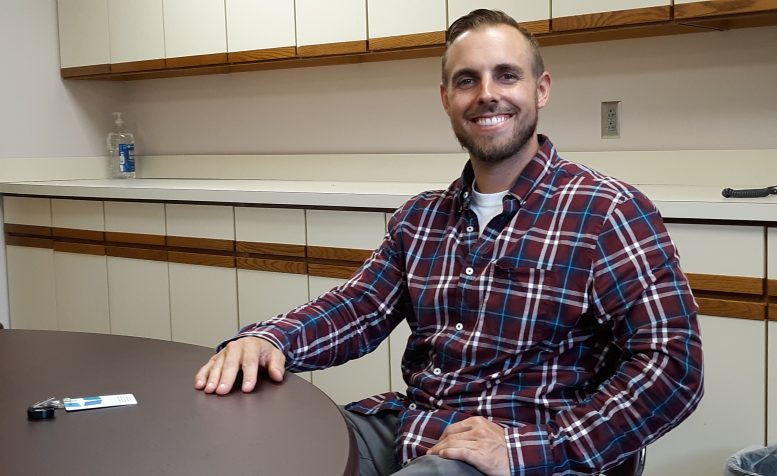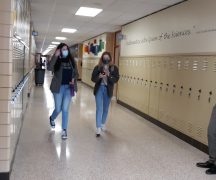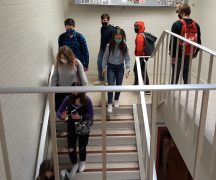By JAN LARSON McLAUGHLIN
BG Independent News
As epidemiologist for the Wood County Health Department, Tyler Briggs loves solving mysteries.
Last summer, before COVID-19 was on his radar, Briggs dealt with the occasional foodborne outbreak and cancer profiles. The most common infectious issues in Wood County had been sexually transmitted diseases – with Chlamydia being the most frequent, averaging 450 cases annually.
Those puzzles pale in comparison to the coronavirus pandemic.
“It’s kicking me in the butt right now,” Briggs said on Thursday. “This is definitely the greatest challenge I’ve faced in my career.”
As of Friday, Wood County had 174 confirmed and probable COVID-19 cases, and 23 deaths.
As the health department’s epidemiologist, Briggs is charged with tracing back to identify people who are likely to get sick because of contact with those who have tested positive. That can take a lot of time and a lot of phone calls.
In most cases, Briggs and six other health department staff ask the patients to trace back to 48 hours before their symptoms began. Ohio’s stay-at-home order has made the job a little easier, since the number of people many patients have come in contact with has been minimal.
“Luckily, with more people stuck at home, the numbers are more limited,” he said.
But in some cases, it’s a long process.
“We’re focused on preventing more people from getting sick,” Briggs said. “It is very difficult. The follow up is very time-consuming. We have had instances where there were large numbers.”
In cases where a patient lives in a congregate setting, or works in a factory, the spread can be rapid.
“It can very quickly go from a household to an entire building,” Briggs said.
Oftentimes it’s difficult for people to remember all the people they have had contact with in the last two weeks or so. That “recall bias” is a typical problem encountered by people working on contract tracing.
That problem is only going to be magnified as the stay-at-home orders are lifted, Briggs predicted.
“As the state opens up, I think that recall bias is going to come into play more,” he said.
If needed, the Wood County Health Department has an epidemiology surge team, and access to UTMC students who can be enlisted to do more contact tracing.
One of the challenges with COVID-19 is that the symptoms are inconsistent. Some people experience fever, cough and shortness of breath. Some experience a loss of taste and smell. Some have gastro-intestinal issues. And many are asymptomatic – but can spread the virus.
When Briggs isn’t tracing back COVID-19 cases, he’s preaching prevention. People need to wear masks, adhere to social distancing, and practice good hygiene.
“People really underestimate that,” he said of the value of simple acts like handwashing. “Prevention should be a huge step, and for some reason it takes a backseat, and I don’t know why.”
The pandemic has resulted in a greater awareness of public health’s importance in the world – and the role of epidemiologists. While healthcare providers focus on their specific patients, public health has to be concerned about the entire county.
“I think this highlights the value of public health,” Briggs said. “People understand how important this field is.”





